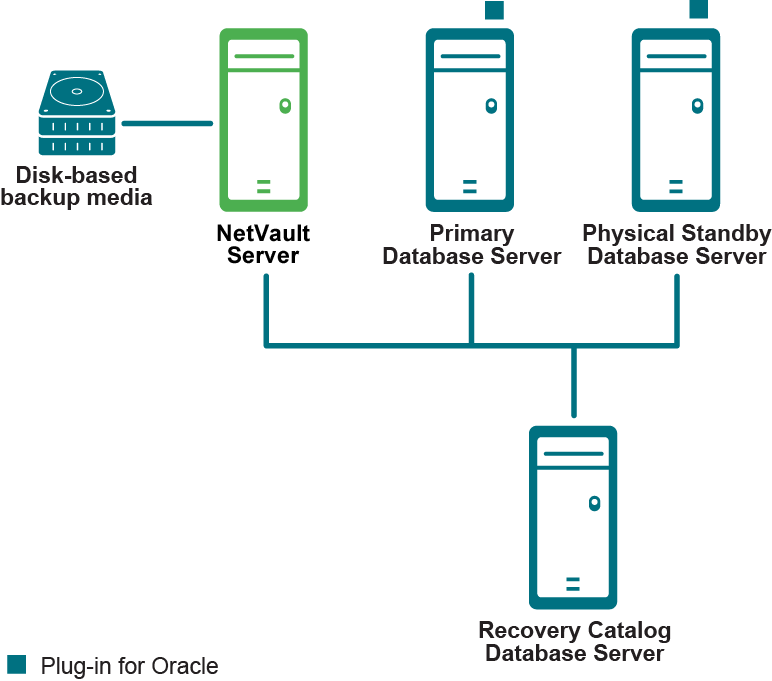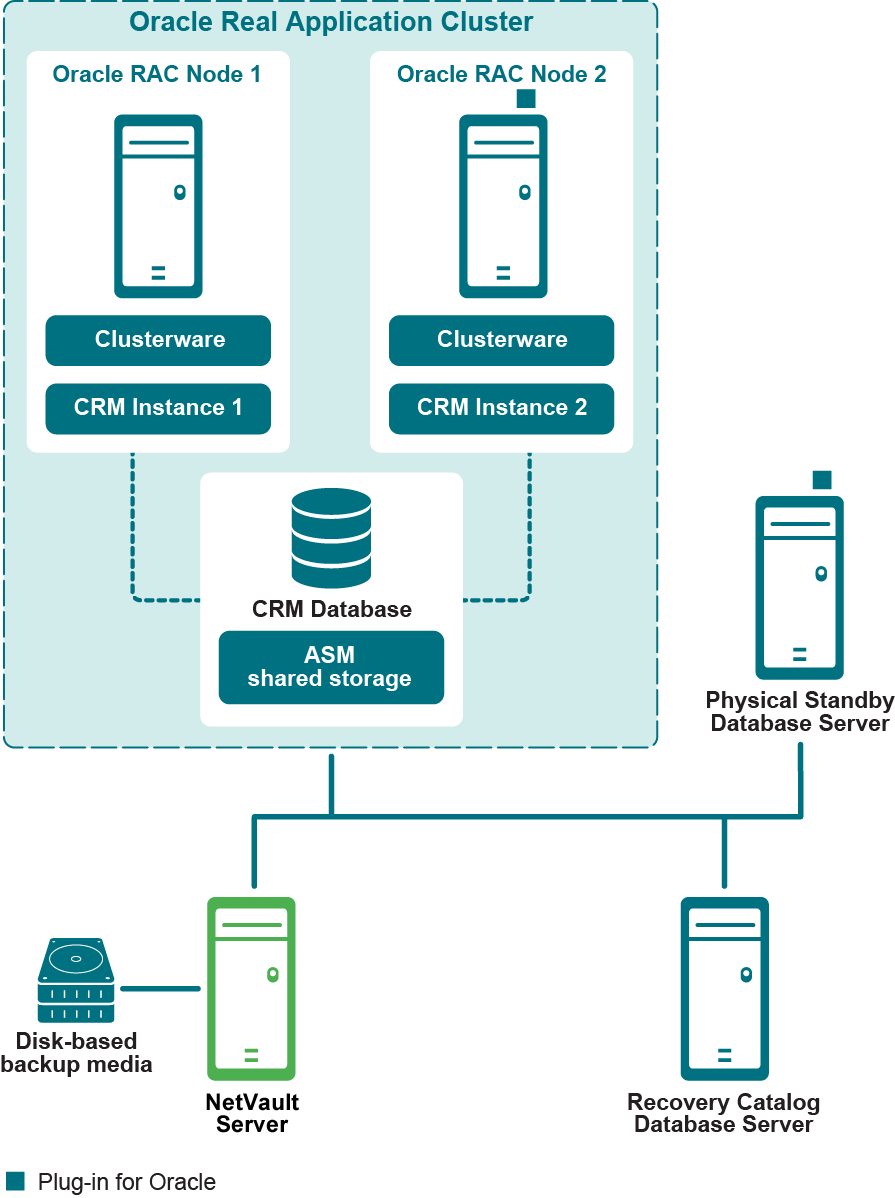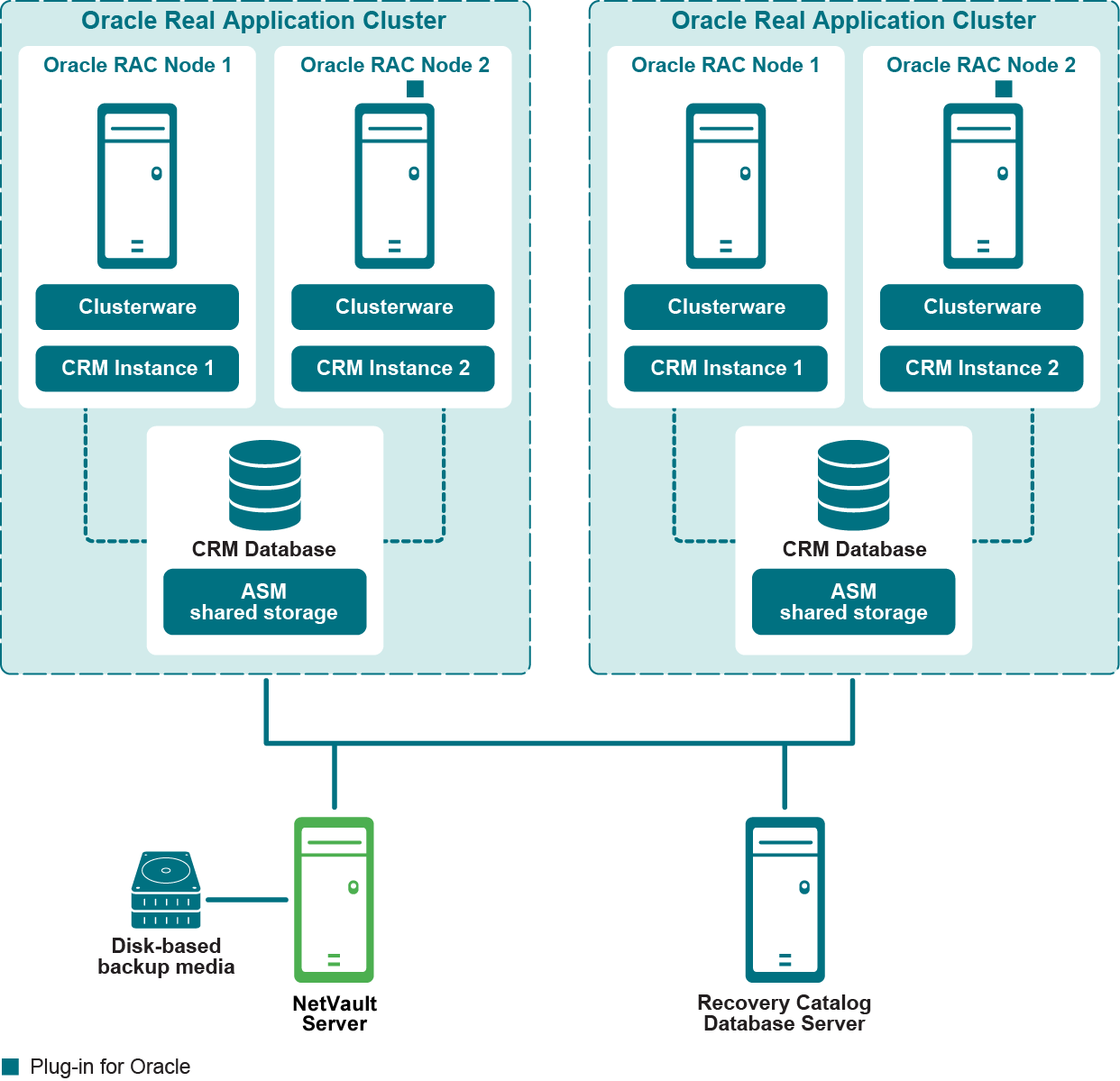Deployment
Plug‑in for Oracle’s support in Data Guard environments is restricted to physical standby databases. Logical and Snapshot standby databases are not supported. A physical standby database is a transactionally consistent copy of the production database. All references to standby databases see physical standby databases.
The plug-in supports the following types of Data Guard deployments:
Deploying the plug-in in a Data Guard environment requires that you install the plug-in on the Primary Database Server and at least one of Physical Standby Servers — based on the backup strategy selected. For more information on selecting a backup strategy, see Defining a deployment strategy.
Single-instance to single-instance Data Guard deployment
Multi-instance RAC to single-instance Data Guard deployment
For more information on deploying the plug-in in a multi-instance RAC environment, see Defining a deployment strategy.
Multi-instance RAC to multi-instance RAC Data Guard deployment
For more information on deploying the plug-in in a multi-instance RAC environment, see Defining a deployment strategy.



